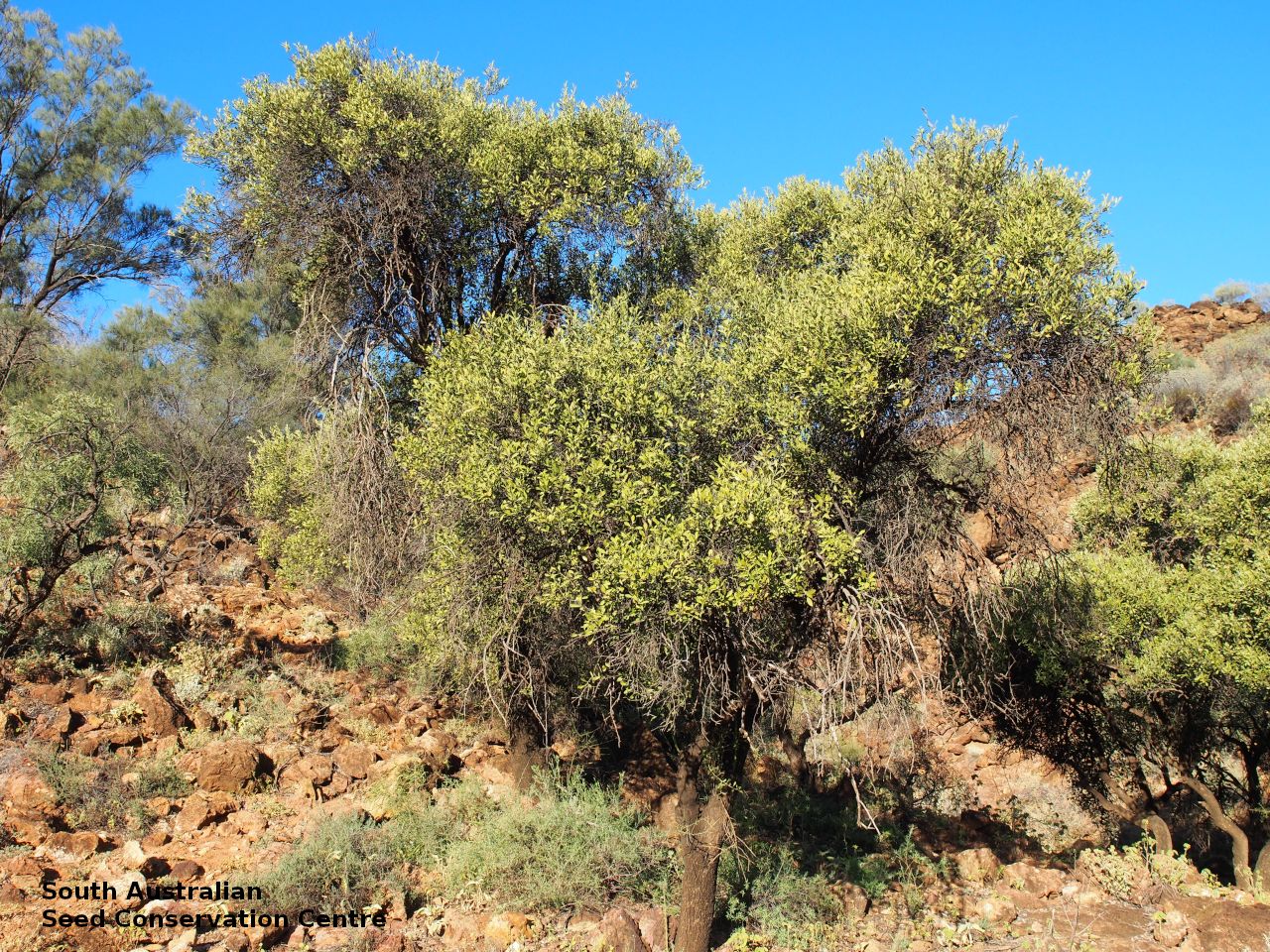
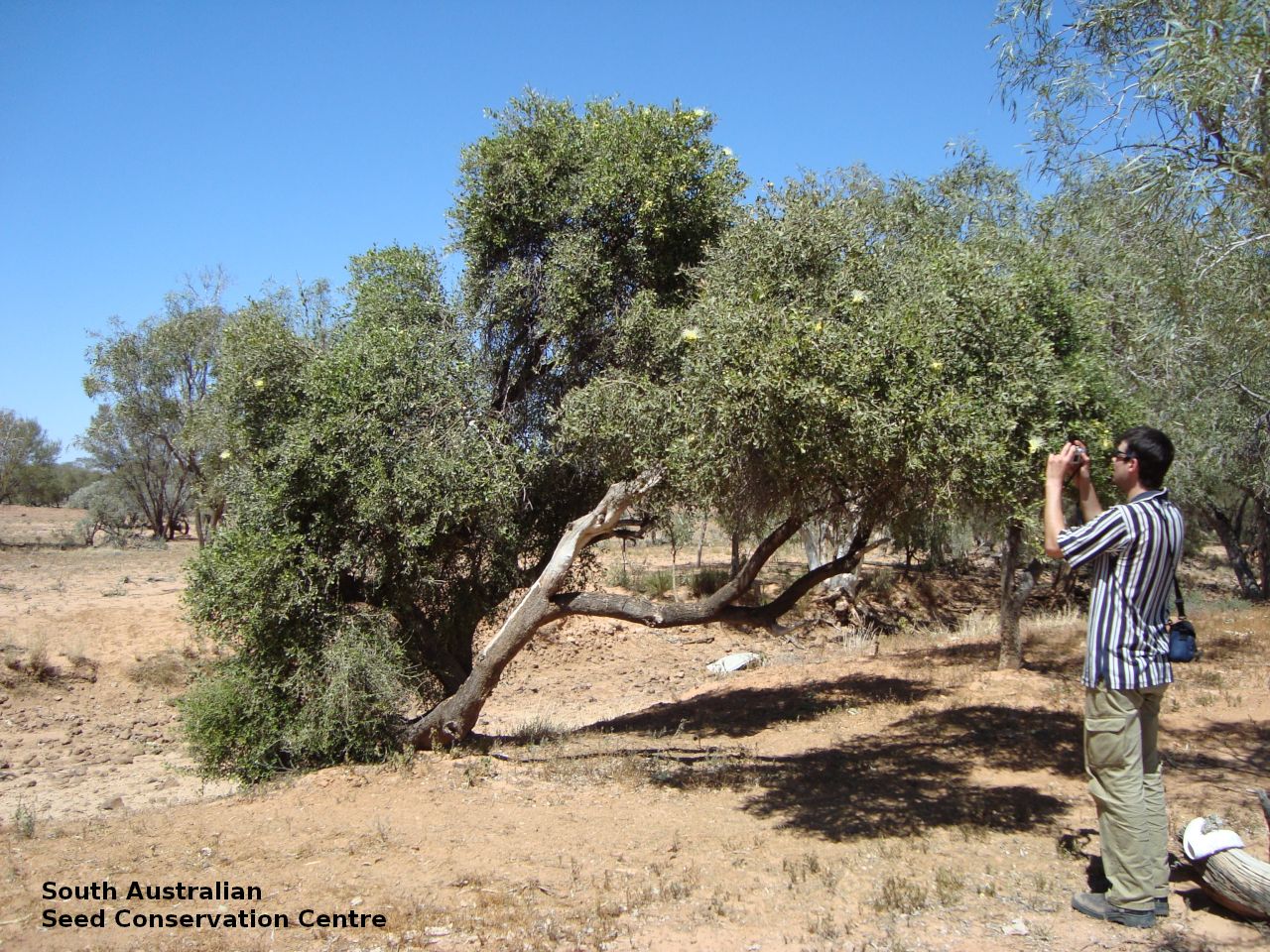
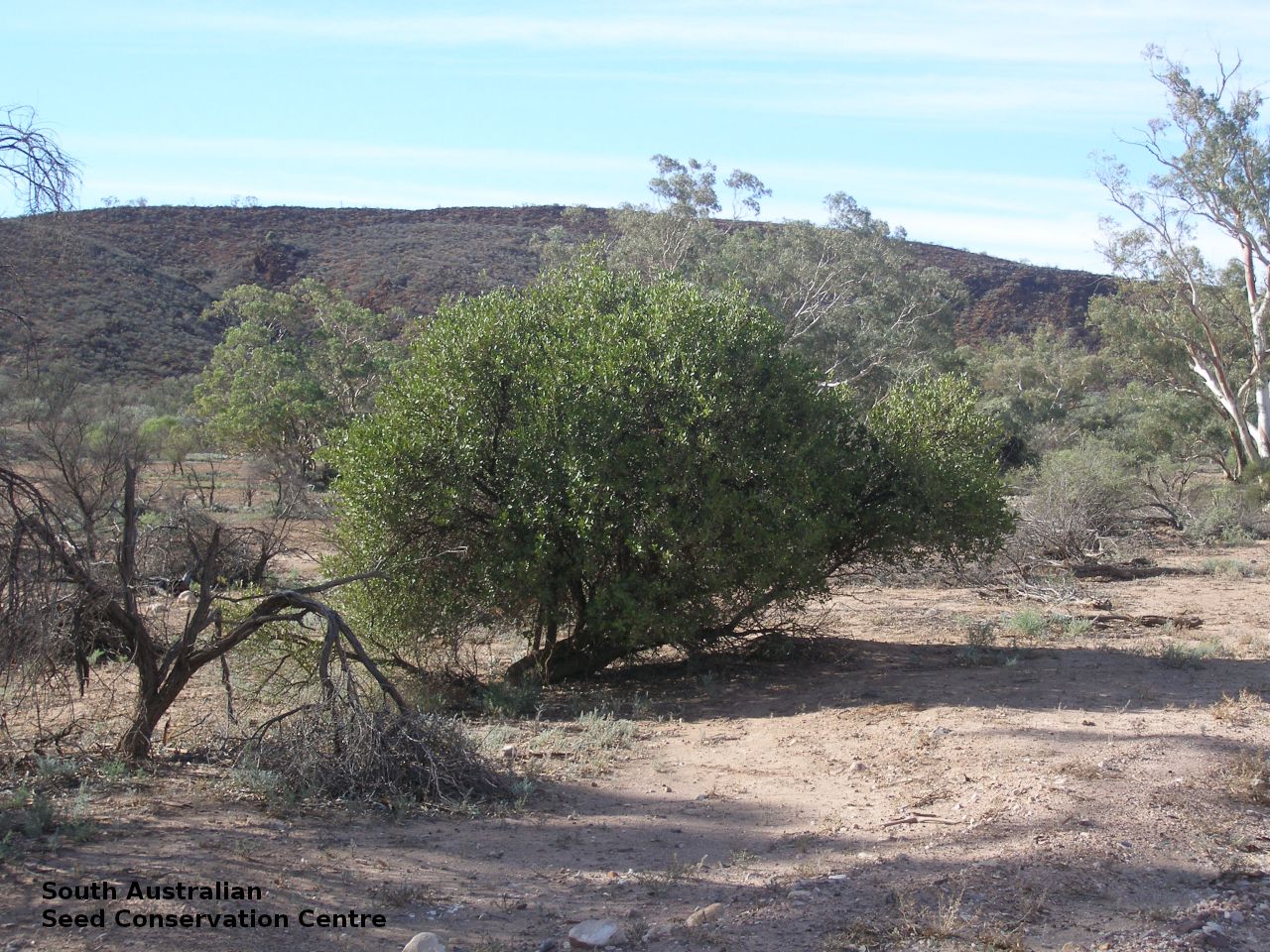
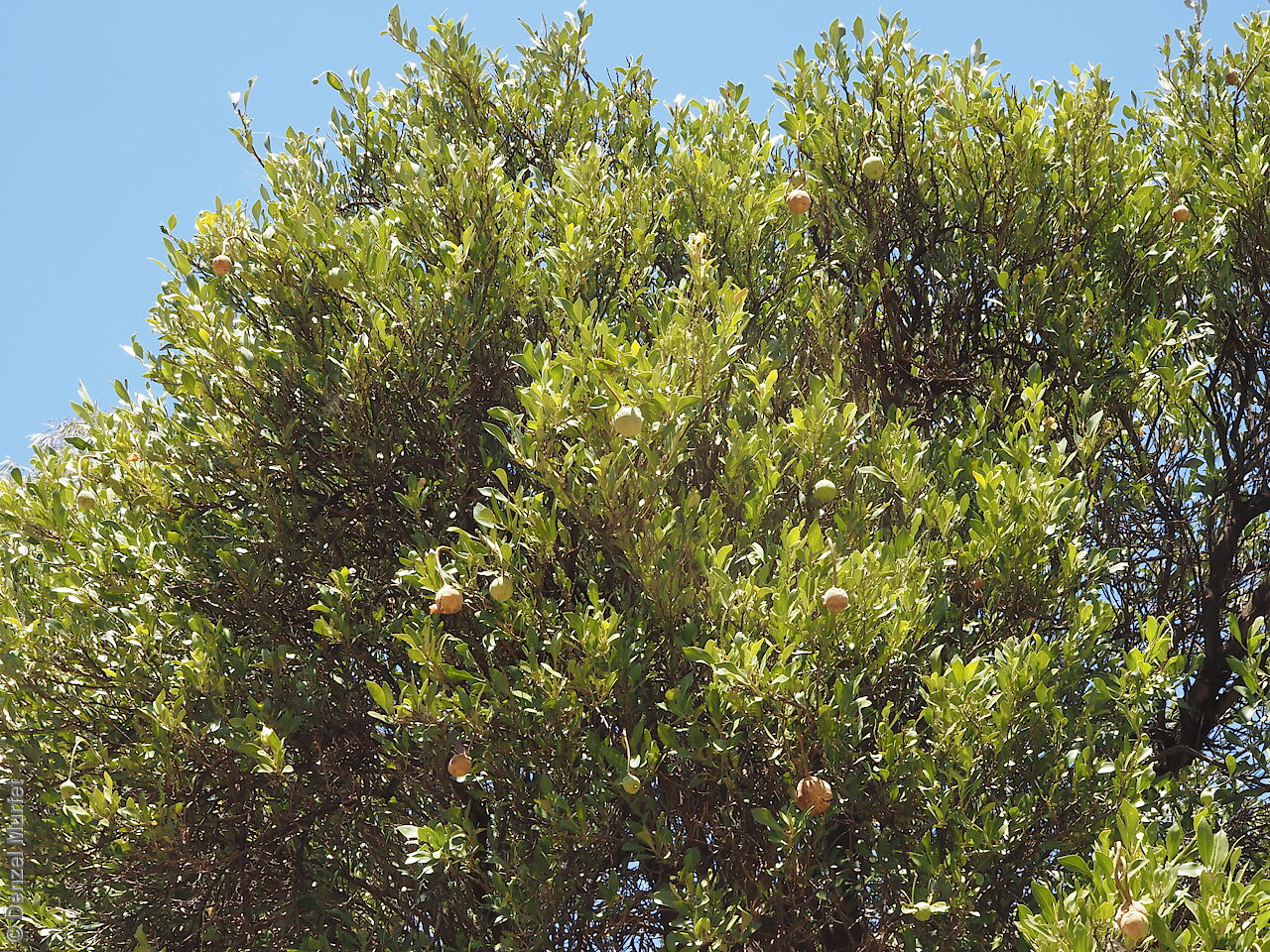
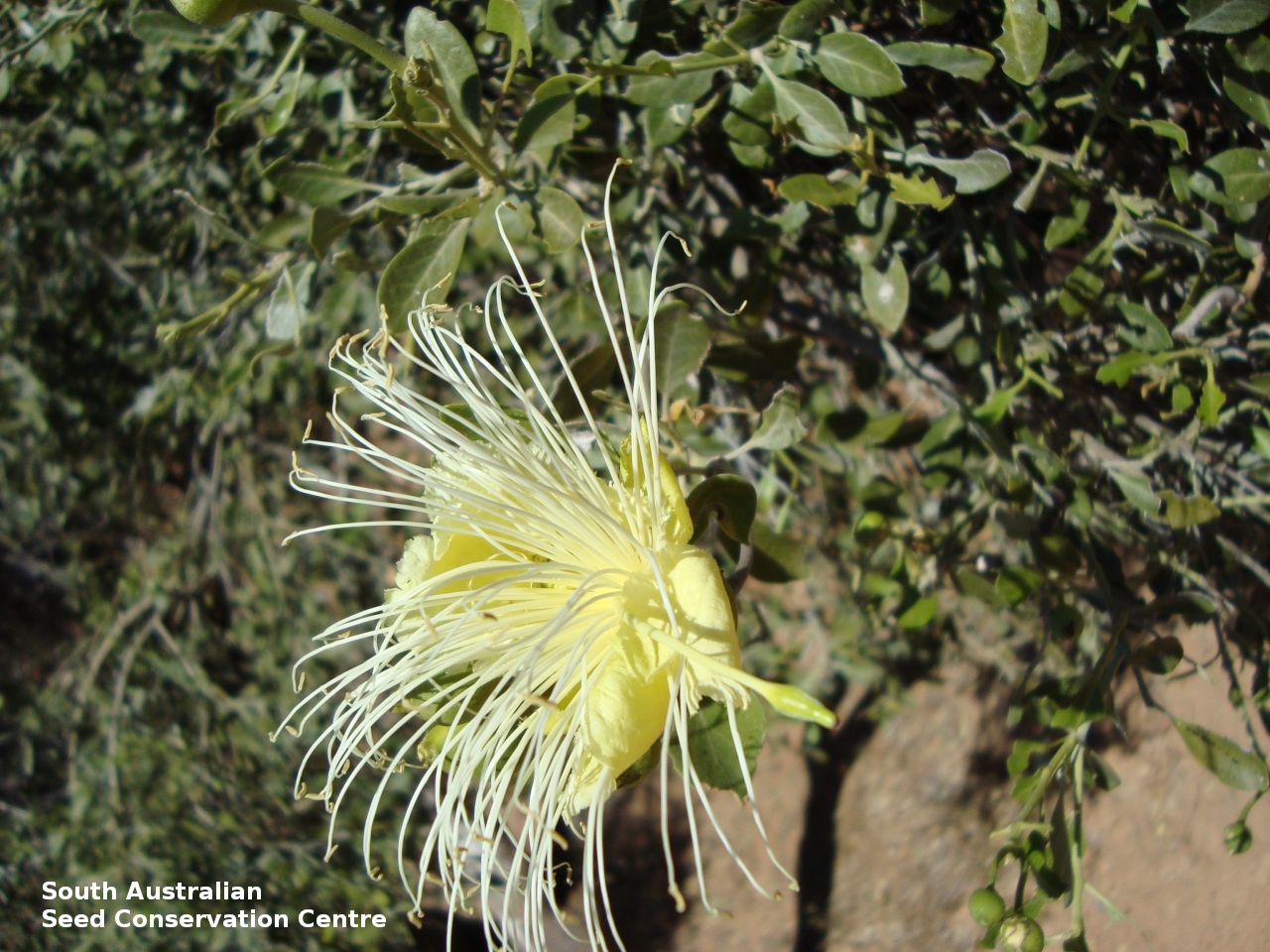
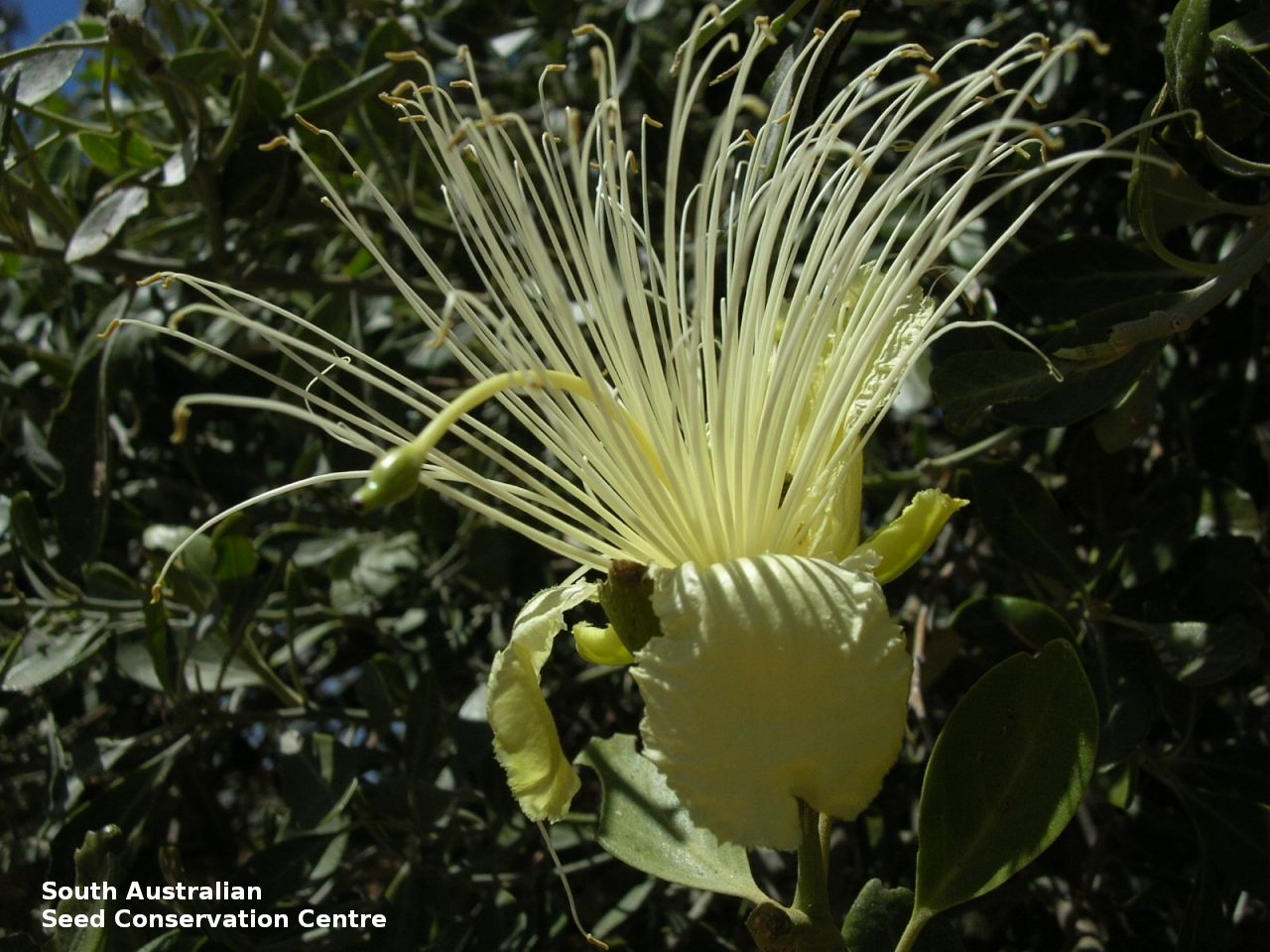
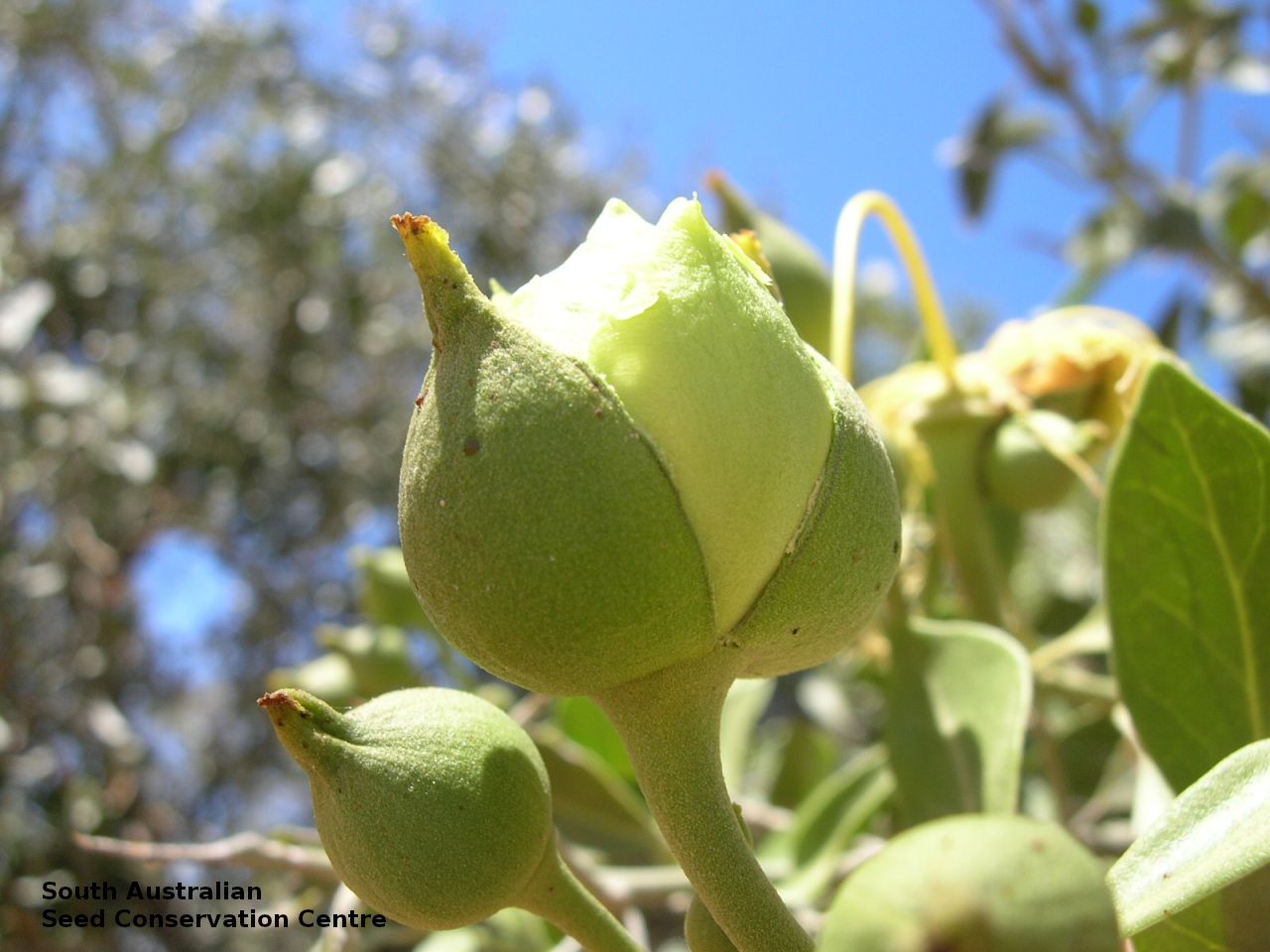
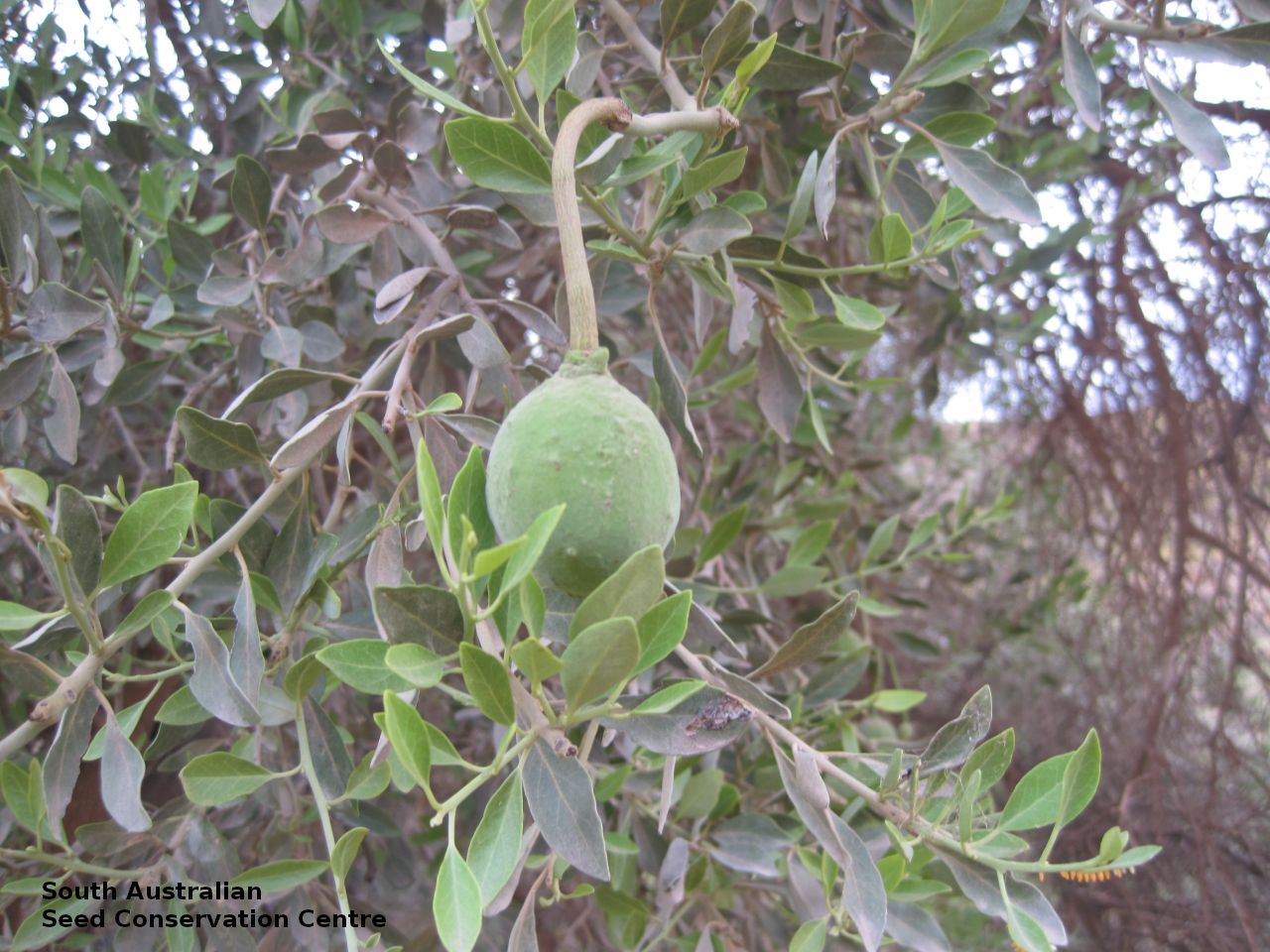
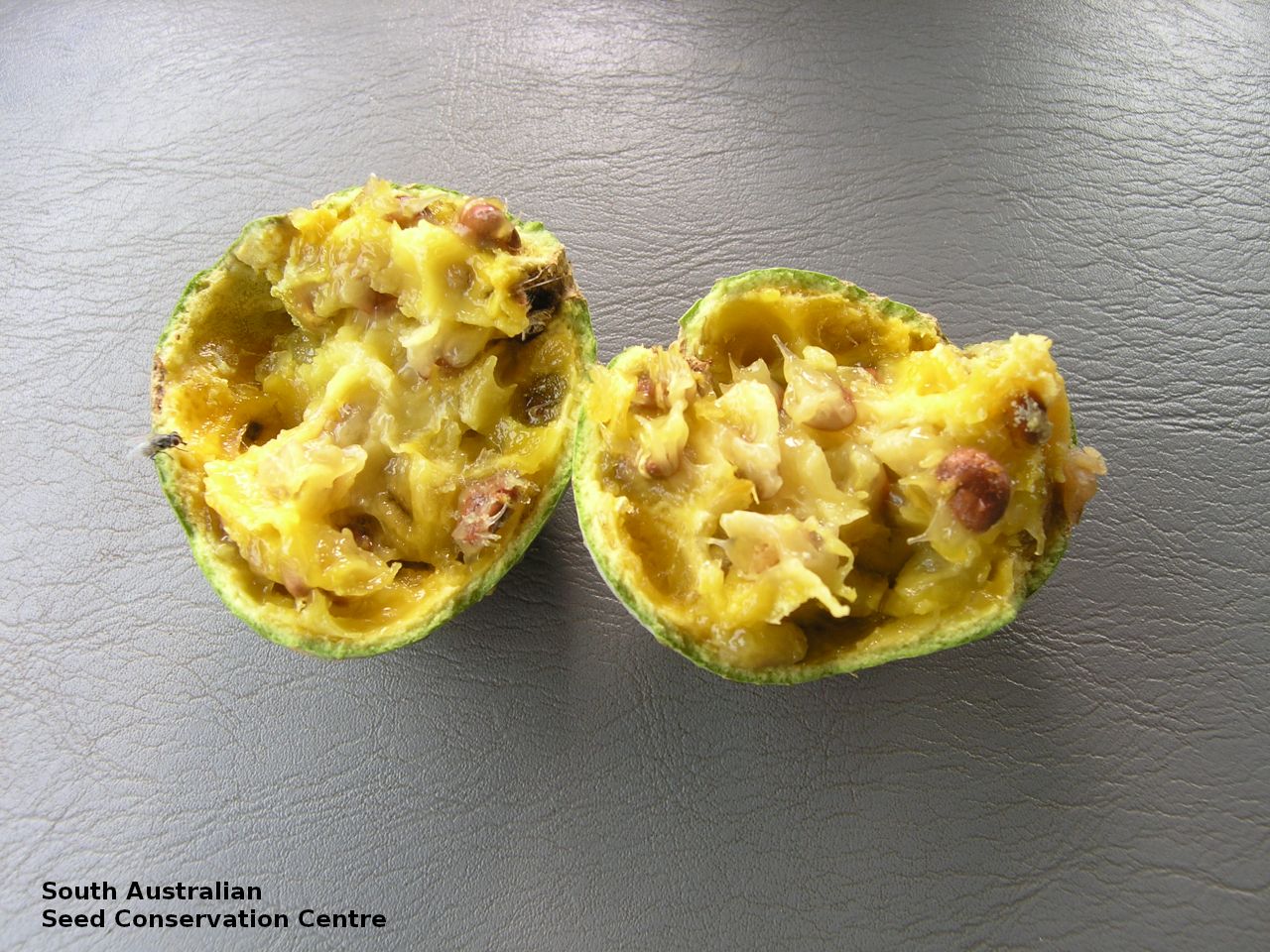
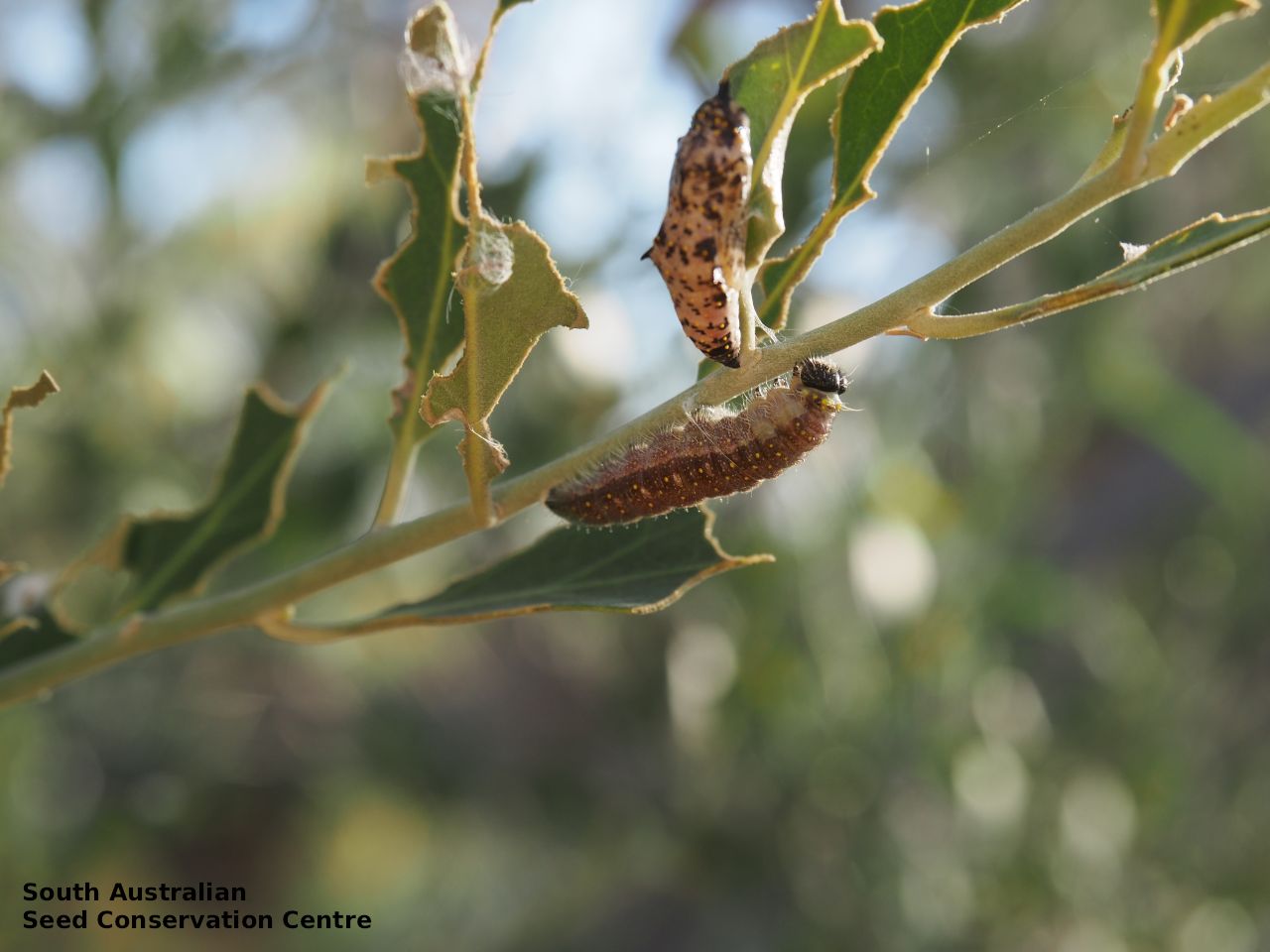
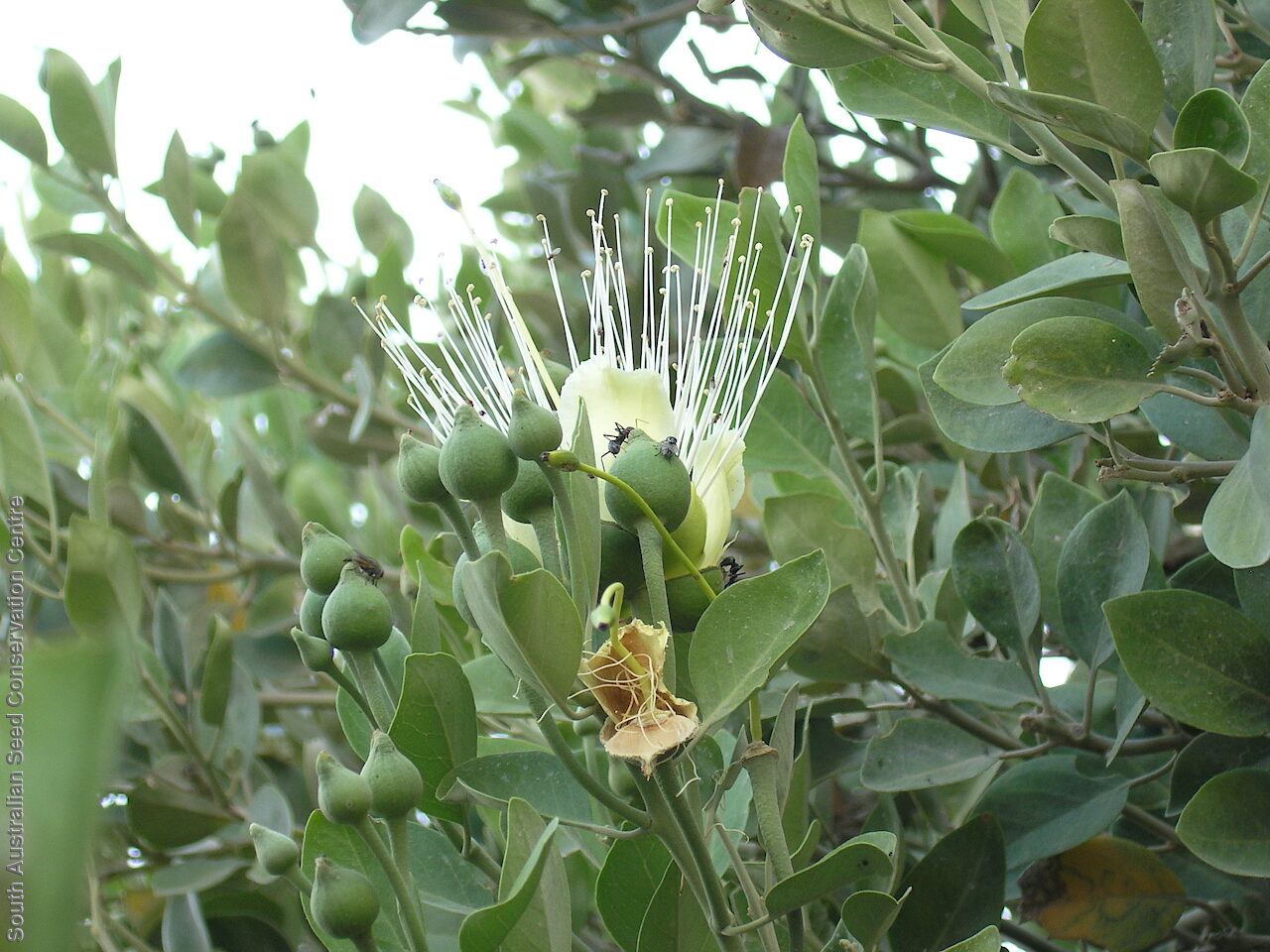
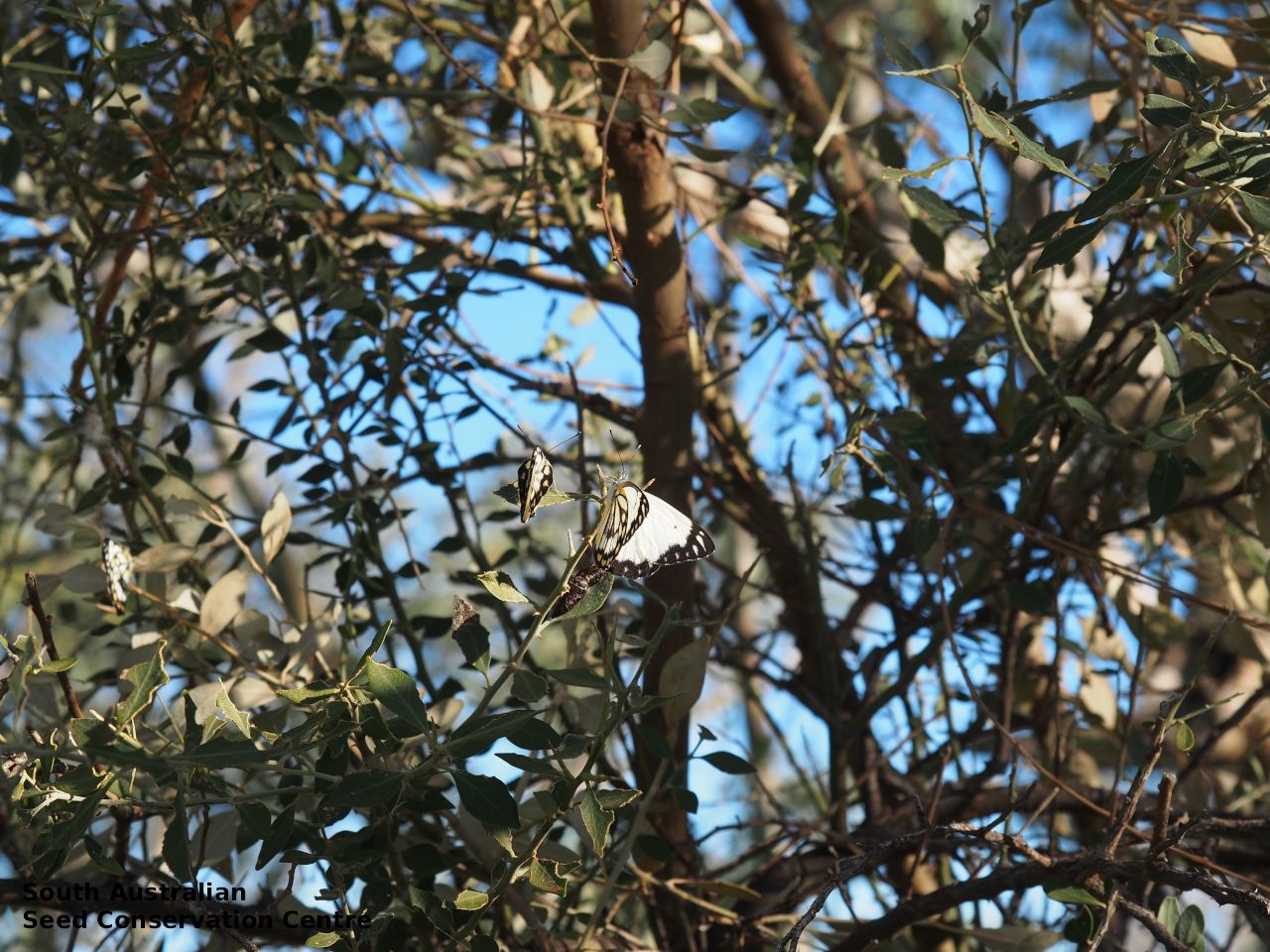
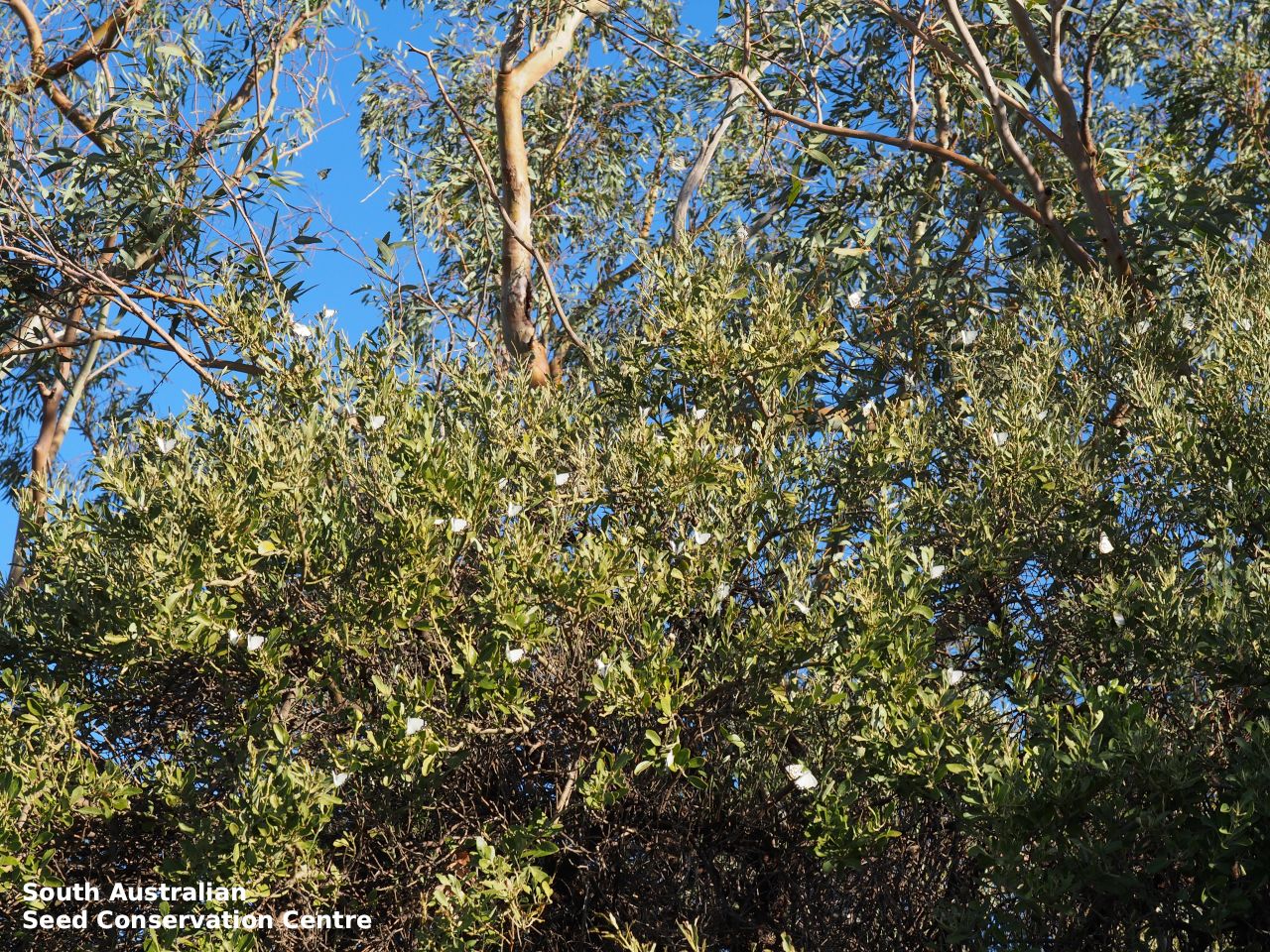
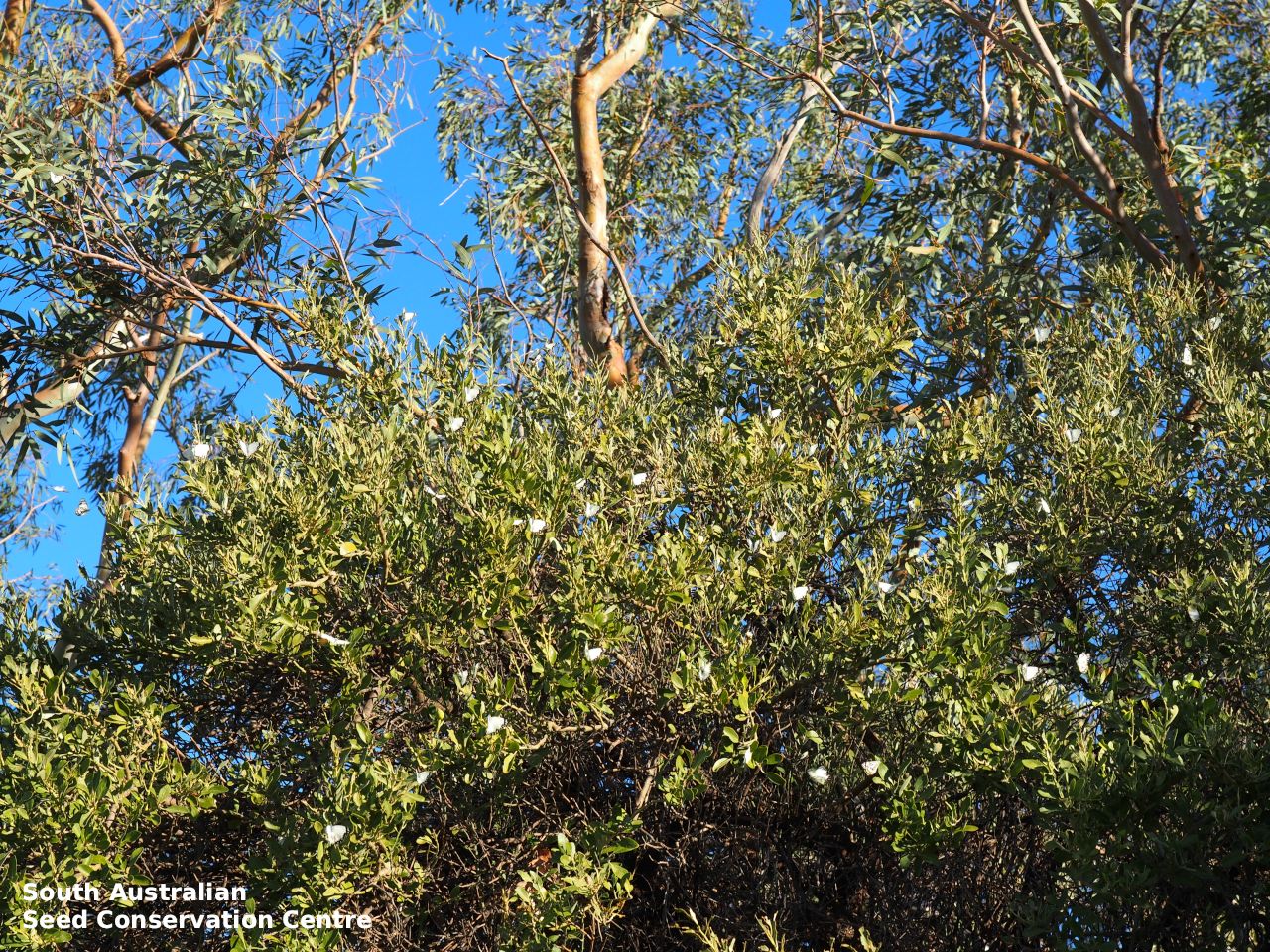
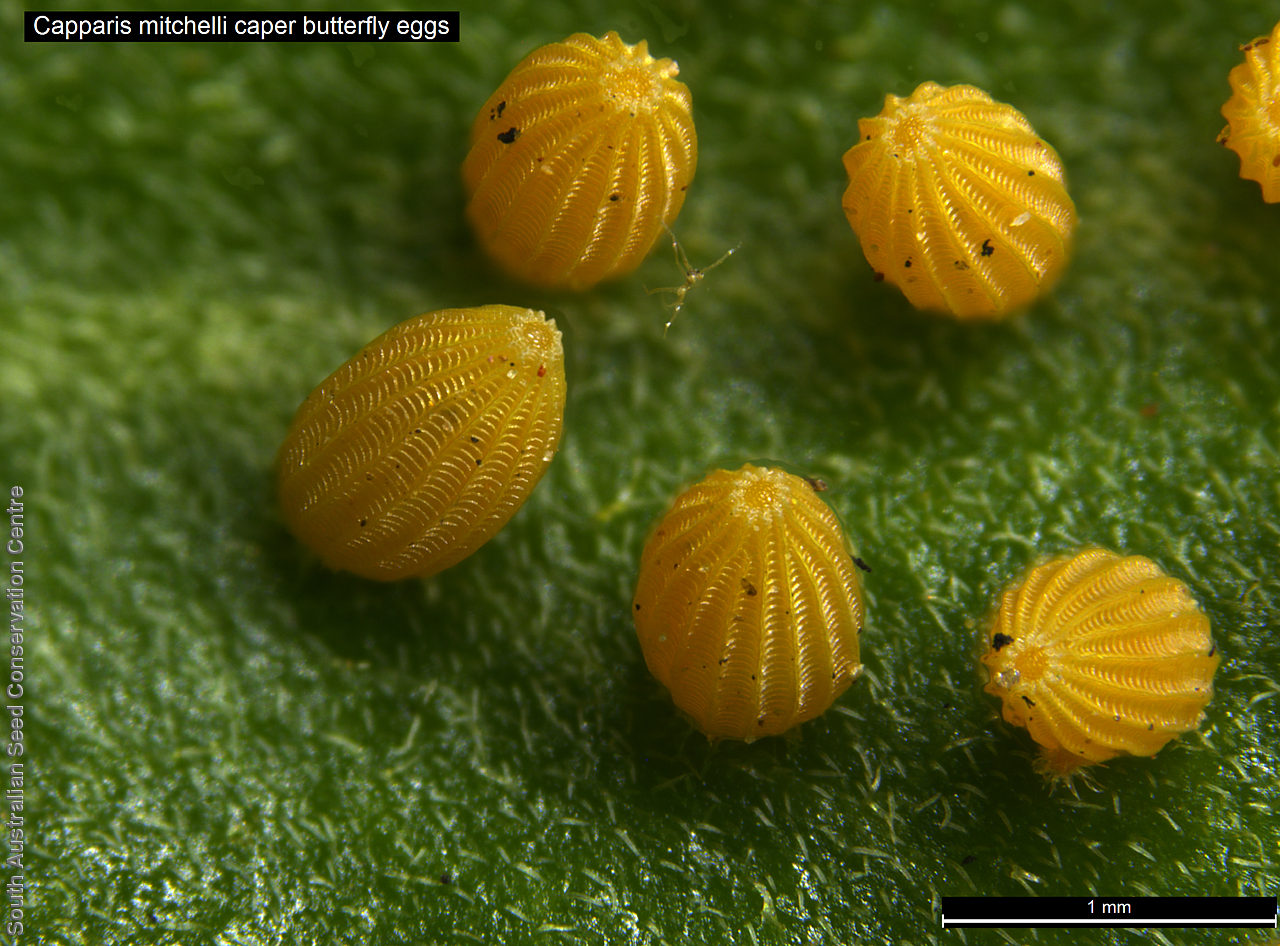
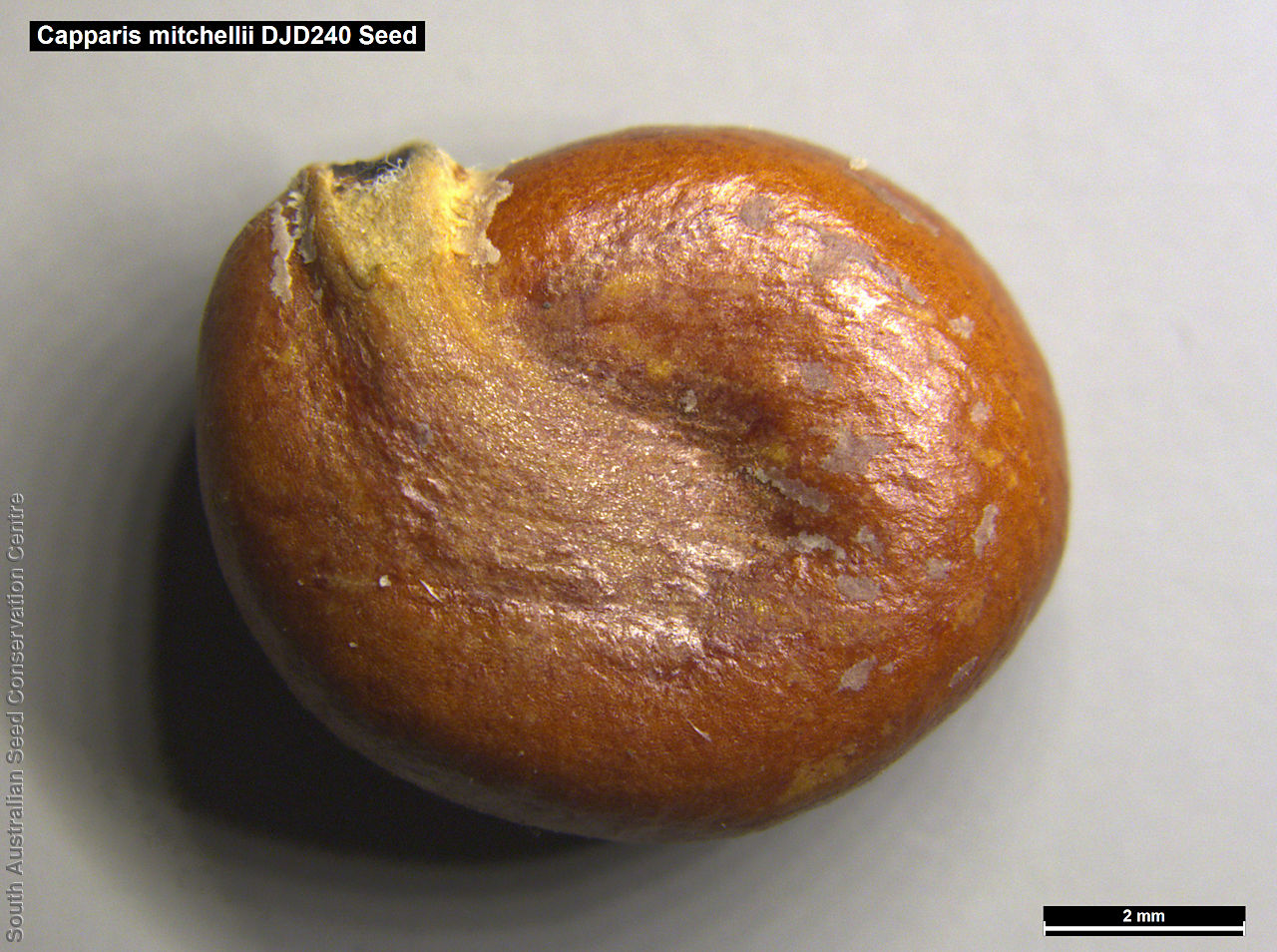
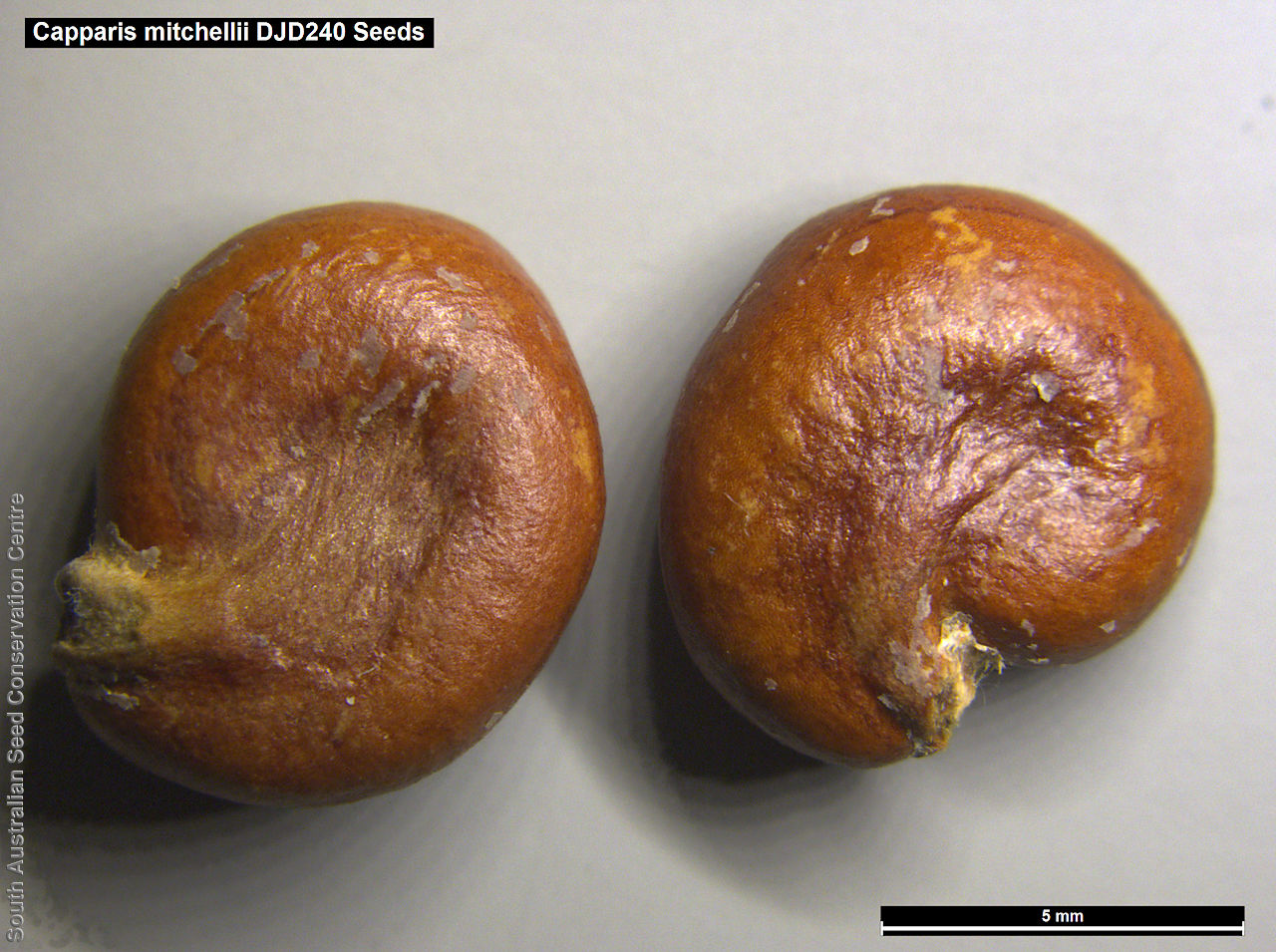
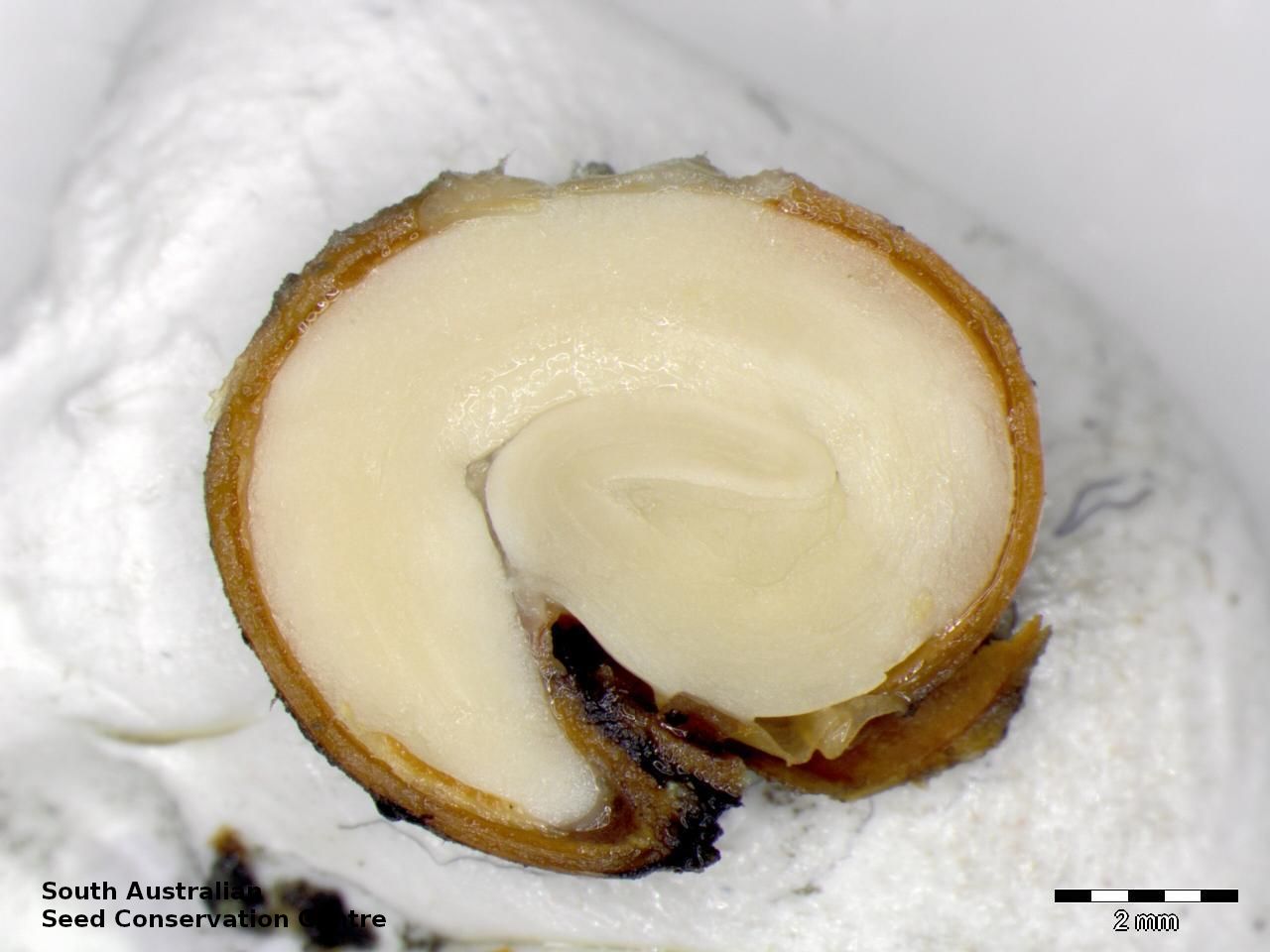
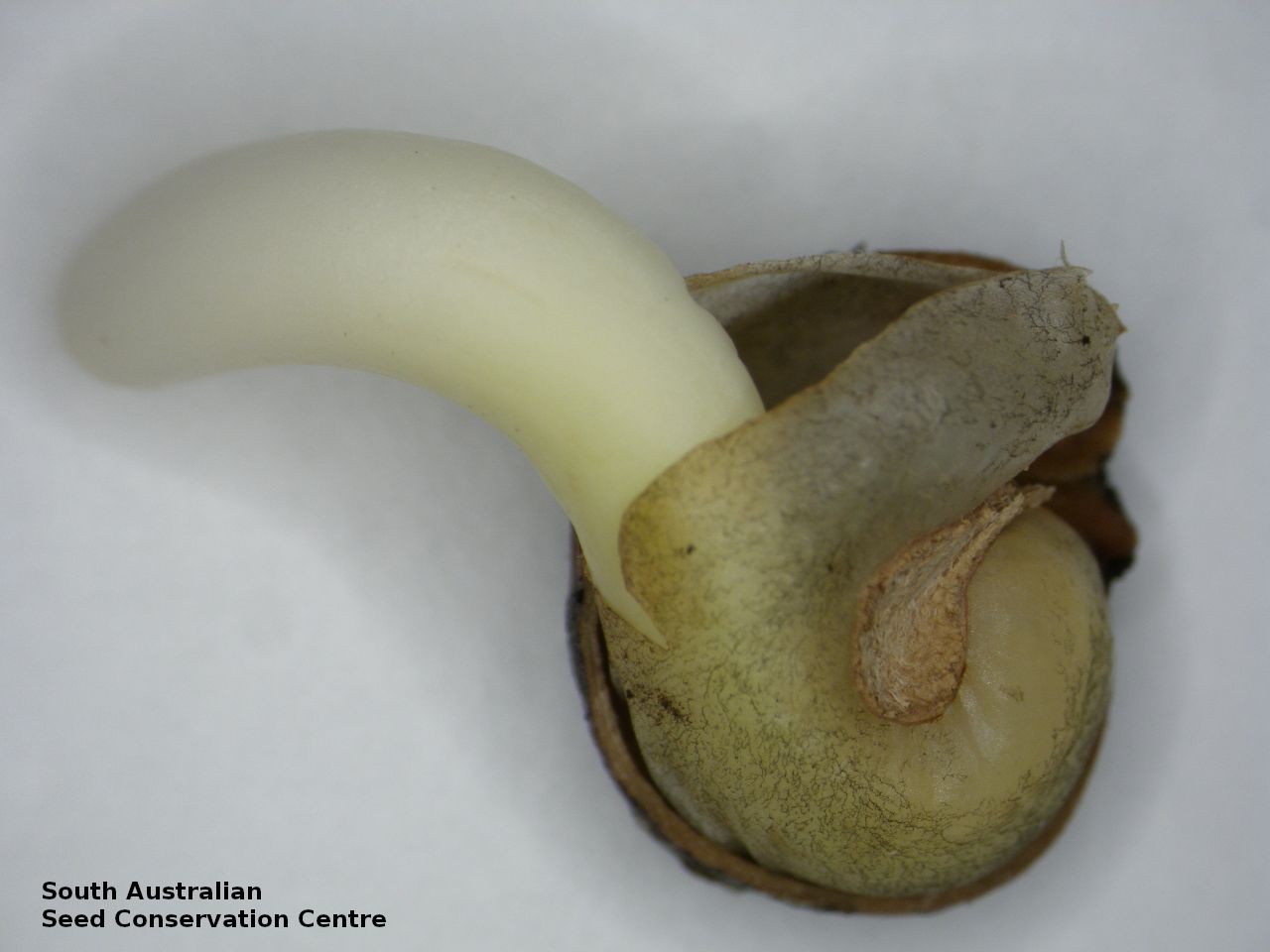

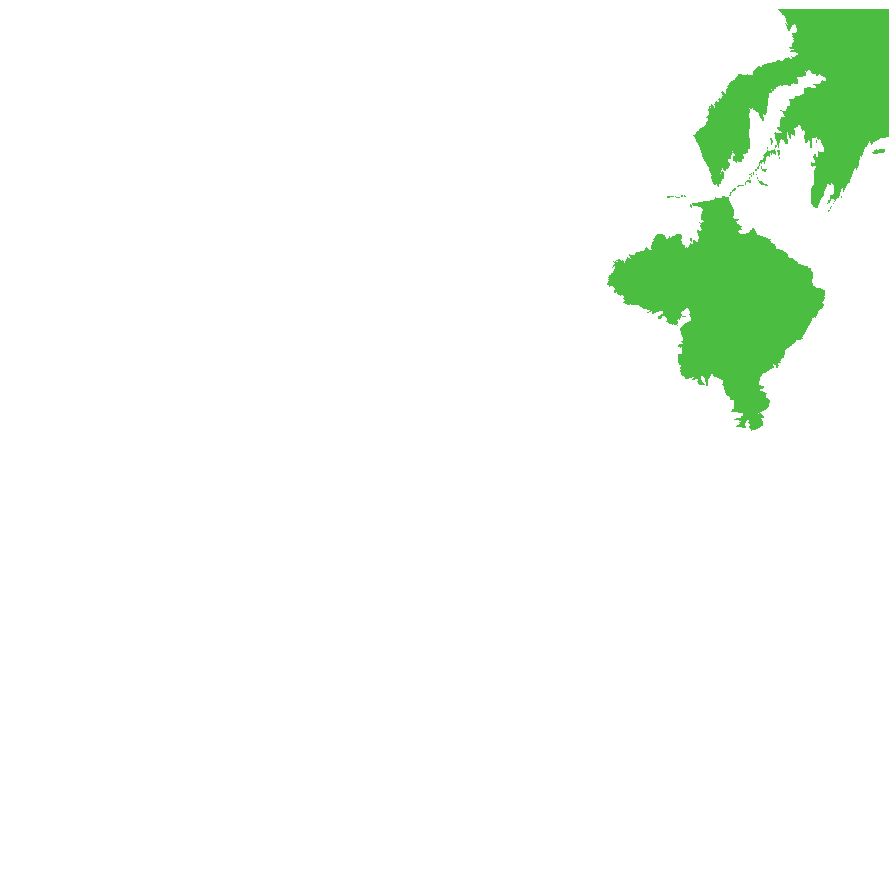
Botanical art
Prior names
Busbeckea mitchellii
Capparis spinosa var. nummularia
Common names
Native orange
Wild Orange
Etymology
Capparis from the Greek 'kapparis' meaning originating in the near or Middle East. Mitchellii named in honour of Major Sir Thomas Mitchell (1792 - 1855), a Scottish surveyor and explorer of south-eastern Australia.
Distribution and status
Found in the north-eastern arid region of South Australia. Also found in the Western Australia, Northern Territory, Queensland and New South Wales. Native. Rare in South Australia. Rare in Western Australia. Common in the other States.
Herbarium regions: Lake Eyre, Flinders Ranges, Eastern
NRM region: South Australian Arid Lands
AVH map: SA distribution map (external link)
Plant description
Small dense bushy tree growing to 10 m tall, with dull green, thick, hairy leaves and long spines on juvenile stems. Flowers large cream to pale yellow with numerous and conspicuous stamens. Flowering possibly all year round. Fruits are a large globular green fruit turning brown when mature, with yellow flesh inside. Seeds are large pale brown semi-flat seeds to 10 mm long and 7 mm wide. Seed embryo type is peripheral.
Seed collection and propagation
Collect seeds between January and December. Collect mature fruits usually when the flesh inside is bright yellow and the seeds are hard and brown. Soak the hard fruit in water and leave until soft. Then break open the fruits and wash the content in water. Drain the liquid leaving behind the seeds. Place the wet seeds onto paper towels and leave to dry. Store the seeds with a desiccant such as dried silica beads or dry rice, in an air tight container in a cool and dry place. From one collection, the seed viability was high, at 80%.
| Location | No. of seeds (weight grams) | Number of plants | Date collected | Collection number Collection location | Date stored | % Viability | Storage temperature |
|---|---|---|---|---|---|---|---|
| BGA MSB | 270 (39.4 g) 1,100 (155.71 g) | 50+ | 11-Jan-2006 | DJD240 Flinders Ranges | 28-Jul-2006 | 80% | -18°C |
| BGA | 1,400 (126.86 g) | 3-Mar-2006 | DJD240 Flinders Ranges | 1-Jan-2012 | -18°C | ||
| BGA | 1,000 (78.280 g) | 10 | 1-Feb-2023 | BKB212 Flinders Ranges | 20-Jun-2023 | 80% | -18°C |
Number of plants: This is the number of plants from which the seeds were collected.
Collection location: The Herbarium of South Australia's region name.
% Viability: Percentage of filled healthy seeds determined by a cut test or x-ray.